Dissolving the Barriers to Measuring Dissolved Oxygen
By Martin Horejsi
Posted on 2013-11-18
The amount of dissolved oxygen (DO) in water is a critical component in the aquatic ecosystem. While measuring the level of DO is a common practice in water quality studies, the sensors often used to capture the data were far from the instantaneous measurements we have grown to love about many other probes.

Popular sensors designed to measure dissolved oxygen in real-time usually required a preparation sequence slightly less complex than the launch of a spacecraft to Mars. initiating the launch of a DO sensor could include a 10-minute warm-up period with the probe tip submerged in distilled water. After that several sequenced, time-consuming and precise steps must be followed to accurately calibrate the probe. To make matters worse,it is recommended that the probe be recalibrated every few hours of use making for an even longer day in the field, or loss of precious class time. Traditional DO probes used a Clark-type polarography electrode to detect the concentration of oxygen in the solution under investigation. In addition to complex preparation of the probe before use, it was also rather needy and demanded special care and feeding to keep it healthy during storage.
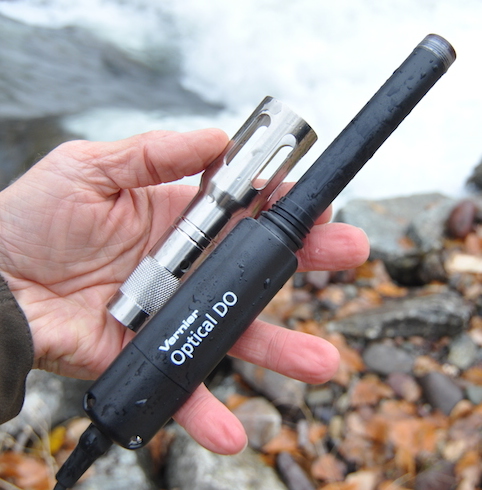
But what if dissolved oxygen could be measured as easily as we measure temperature complete with auto-detection of the sensor and no calibration necessary? Not only would we take more DO measurements in more places, but we would also greatly expand our field of study both figuratively and literally!
Now just such a probe is now available! Vernier Technology has an Optical Dissolved Oxygen sensor that uses a luminescence-based optical oxygen sensor that makes taking DO measurements so easy that students can venture into previously uncharted territory to collect data.
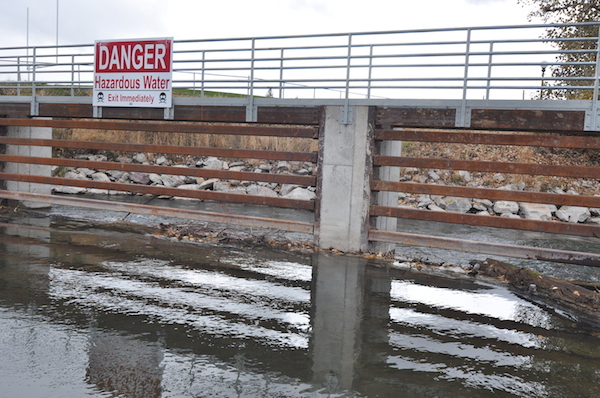
As a test of the new probe, I headed out to a nearby waterway not generally considered conducive to school-age scientific exploration. Even thought the channel is just a stone’s throw from a university, it’s somewhat agressive nature is broadcast conspicuously through large “Danger” signs sprinkled around the area.
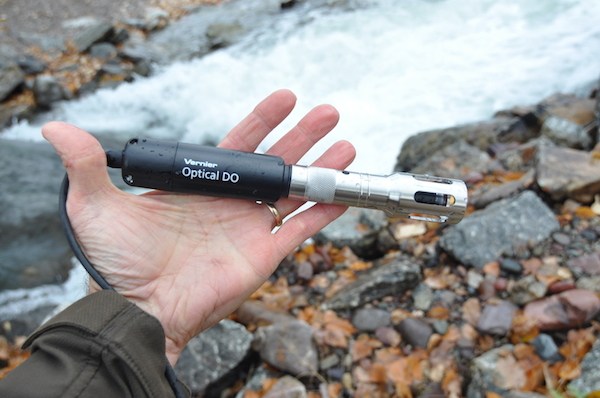
The Optical Dissolved Oxygen sensor, or what I call an ODO, has a few other tricks up its sleeve. First, the probe is located at the end of a meter and a half of waterproof cable. Next, the entire business-side that end of the cable is submergible. That means you can lower the probe from a height down to the water, or control the probe’s decent down through several thermoclines.
Additionally an optional 125 gram stainless steel guard can be added to the end of the probe to protect the actual sensor as well as weigh down the instrument to help control the variables of depth and current, and in my case wind. The steel guard gently screws onto the probe’s plastic midsection in the same way and place as the translucent housing designed to keep the probe safe and moist during storage.
In one of my tests, I took advantage of the probe’s 1.6m cable to lower it into a water channel immediately upstream from a diversion culvert. Although two meters above the water, the added length of my arm was enough to submerge the probe in the stream.
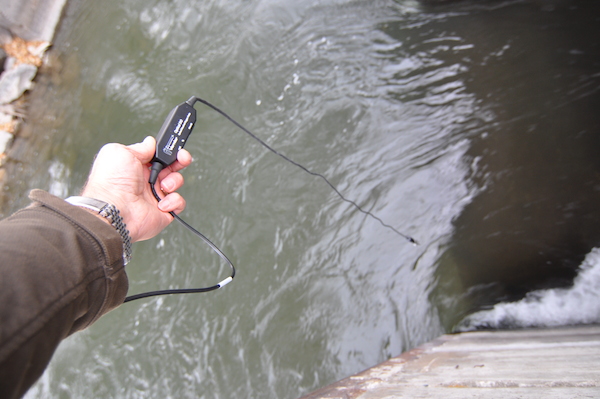
For combined measurements in the current, I held the probe in the water along with a Vernier Flow Rate sensor to capture both DO and current speed. Because of the somewhat tricky area I was testing, and that I was using a LabQuest2 interface and an iPad Mini, I collected samples from several different locations in one data run with the intent to sort it out later. Managing both sensors at the same time was so easy, I could do it one-handed and take pictures with the other hand, all with a LQ2 in the mix as well.
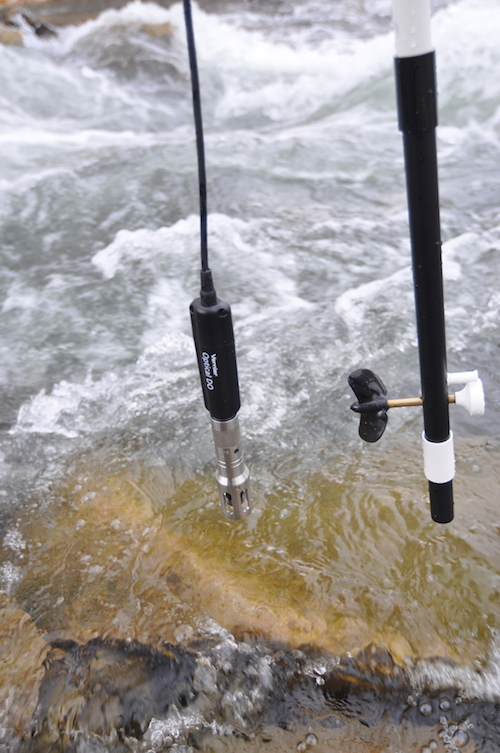
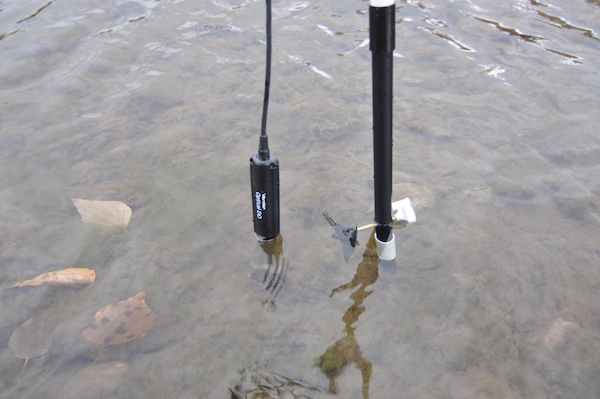
For best results, it is recommended that the ODO probe remains submerged in the medium under exploration for at least a minute. And as I discovered, it is possible to get DO readings over 100% if the probe bounces around in a strong current. Given that in one of my tests the plastic tube of the flow rate sensor bowed downstream as the sensor’s propeller looked less like a boat motor and more like an airplane trying to take flight, so yes, strong currents were present.
Disclaimer: The views expressed in this blog post are those of the author(s) and do not necessarily reflect the official position of the National Science Teaching Association (NSTA).


